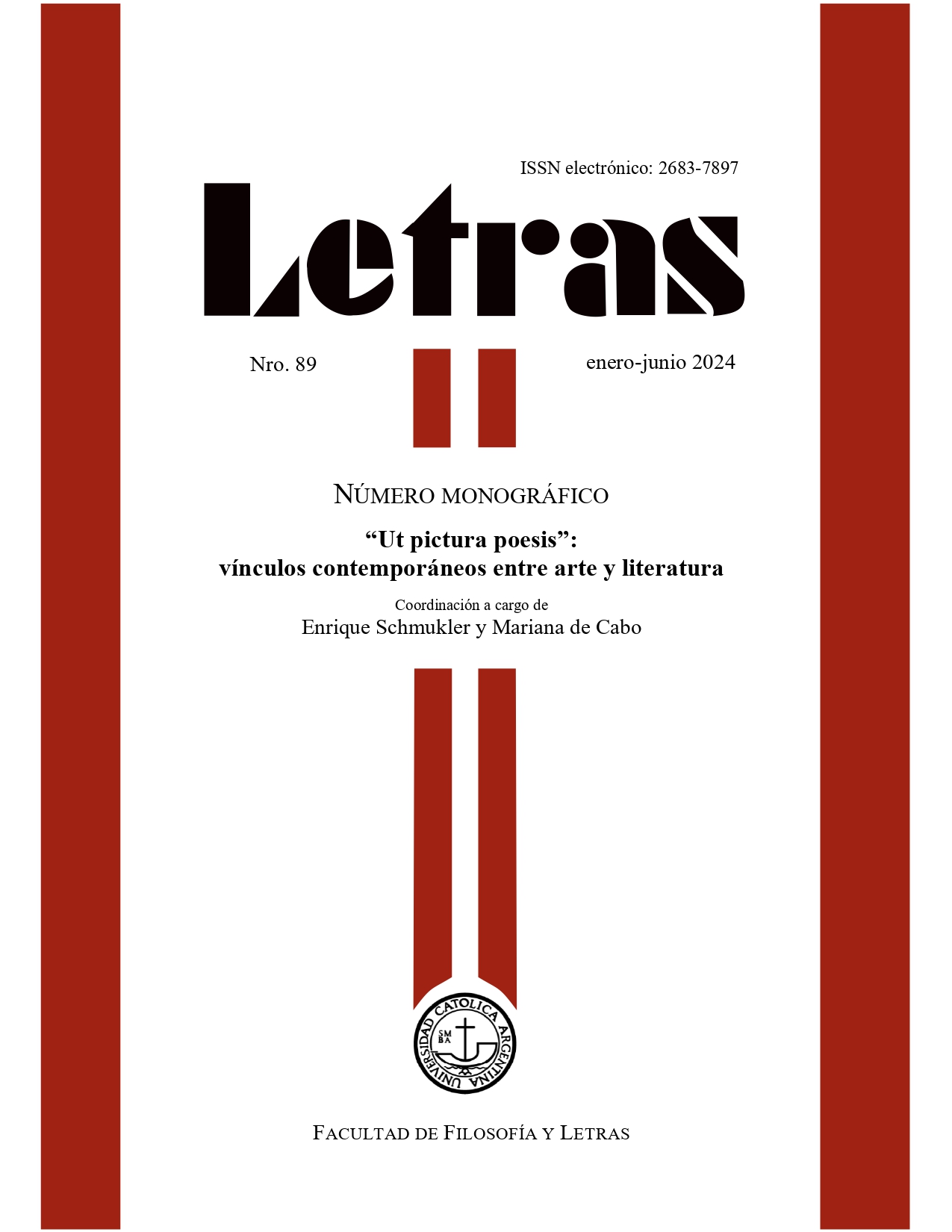Ecphrasis, Eroticism and Fin de siècle: Joris-Karl Huysmans and Gustave Moreau
DOI:
https://doi.org/10.46553/LET.89.2024.p223-241Keywords:
Ecphrasis, Eroticism, Fin de siècleAbstract
In Joris-Karl Huysmans’ À rebours (1884), the protagonist Jean des Esseintes takes a path inwards: he formally locks himself up in his house and restricts art to an interior in his defence against the outside, the business world of a capitalist bourgeoisie oriented towards utility and use value. In these interior spaces, different worlds, different arts, different experiences, sensations and sensory perceptions overlap and come into contact with each other, jointly enhance their effects and establish a world of artistic synaesthesia. Through Gustave Moreau's “L’Apparition” from 1876, we will analyse how Huysmans presents us with a pyrotechnic spectacle of ekphrasis, i.e. the literary transposition of iconic texts into (written) language with subtlety.
Downloads
References
BLOOM, Harold, 1973, The Anxiety of Influence, New York, Oxford University Press.
BLUMENBERG, Hans, 1979, Arbeit am Mythos, Frankfurt am Main, Suhrkamp.
BUB, Stefan, 2021, “Mondlandschaft und taedium vitae. Eine Traumepisode aus Joris-Karl Huysmans’ En rade”, Romanistische Zeitschrift für Literaturgeschichte (Heidelberg), XLVm 1-2, pp. 109-124.
ETTE, Ottmar, 1994, “‘Así habló Próspero’. Nietzsche, Rodó y la modernidad filosófica de Ariel”, Cuadernos Hispanoamericanos (Madrid) 528, pp. 48-62.
ETTE, Ottmar, 2020, LiebeLesen. Potsdamer Vorlesungen zu einem großen Gefühl und dessen Aneignung, Berlín / Boston, Walter de Gruyter.
ETTE, Ottmar, 2021, Romantik zwischen zwei Welten. Potsdamer Vorlesungen zu den Hauptwerken der romanischen Literaturen des 19. Jahrhunderts, Berlín / Boston, Walter de Gruyter.
HINTERHÄUSER, Hans, 1980, “Joris-Karl Huysmans”, en Wolf-Dieter Lange (ed.), Französische Literatur des 19. Jahrhunderts. Vol. II: Naturalismus und Symbolismus, Heidelberg, Quelle & Meyer, pp. 254-274.
HOUELLEBECQ, Michel, 2015, Soumission, Paris, Flammarion.
HUYMANS, Joris-Karl, 1977a, À rebours, edición de Marc Fumaroli, Paris, Gallimard.
HUYMANS, Joris-Karl, 1977b, Al revés, traducción de Rodrigo Escudero, Buenos Aires, Ediciones Librerías Fausto.
JURT, Joseph, 1984, “Huysmans entre le champ littéraire et le champ artistique”, en Huysmans. Une esthétique de la décadence. Actes du Colloque de Bâle, Mulhouse et Colmar des 5, 6 et 7 novembre 1984, Paris, Honoré Champion, pp. 115-126.
MÖLK, Ulrich, 2003, “Gesellschaftskritik in A rebours? Über einige Ansichten des Herzogs Jean Floressas des Esseintes”, en Hanspeter Plocher, Till R. Kuhnle y Bernadette Malinowski (eds.), Esprit civique und Engagement. Festschrift für Henning Krauß zum 60. Geburtstag, Tübingen, Stauffenburg Verlag, pp. 459-466.
PROUST, Marcel, 1989, À la recherche du temps perdu, edición de Jean-Yves Tadié, Paris, Gallimard, vol. 4.
SHRYOCK, Richard, 1992, “Ce cri rompit le cauchemar qui l’opprimait: Huysmans and the Poetics of À rebours”, The French Review LXVI, 2, pp. 243-254.
VARGAS, Ava, 1986, La Casa de Cita. Mexican Photographs from the Belle Epoque, Colin Osman (comentarios), London / New York, Quartet Books.
Downloads
Published
How to Cite
Issue
Section
License
Copyright (c) 2024 Ottmar Ette

This work is licensed under a Creative Commons Attribution-NonCommercial-ShareAlike 4.0 International License.












